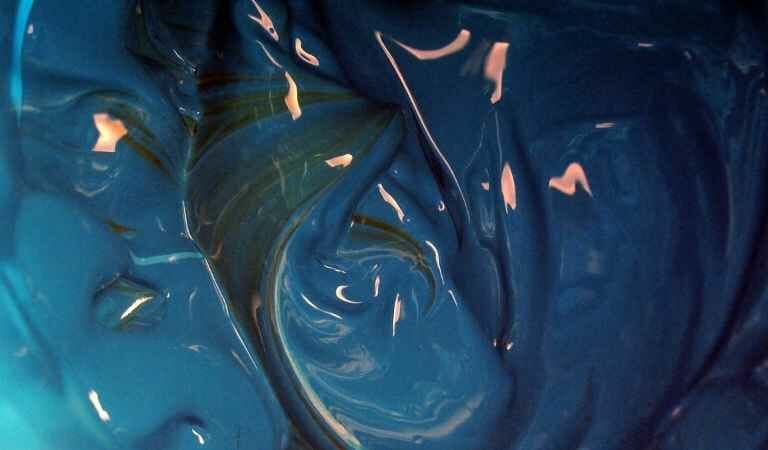The question of whether or not you can sand acrylic paint is a tough one for any beginner.
Acrylic painting has been around for centuries and it’s still going strong. It’s an affordable, easy-to-use, and versatile medium that we highly recommend.
However, there are some questions about what happens when you do decide to sand your acrylic paintings. We’re here today to answer the hard-hitting question: Can You Sand Acrylic Paint? So read on if this sounds like something you’ve wondered about!

Can I Sand Acrylic Paint?
Yes, it’s possible to sand acrylic paint with regular sandpaper. But before you do, make sure that your painting is dry first! The easiest way to ensure this is by waiting for at least 2 days after it was finished. Acrylic paintings can be made wet again by applying more water or paint over the top of the dried acrylic.
But once it dries out or fully cures, there are no more solvents to help the acrylic restack on top of itself. Acrylic paint dries hard and brittle so sanding without taking proper care can make things worse.
How to Sand Acrylic Paint?
Sanding acrylic paint can be tricky. Acrylic is a hard, brittle material that’s not easily sanded. Doing so risks the paint being scraped off the surface you’re trying to sand. There’s no telling what type of surface you’ll be sanding the paint from – in this article, we’ll teach you how to do so on both wood and metal surfaces.
Wooden Surface
If your wooden surface is unfinished or unpainted, all you have to do is lightly brush over the surface with a sanding pad. This removes any rough patches in preparation for painting. Sanding doesn’t damage the wood when it’s done properly – just don’t forget to use a light hand!
Painted Wood Surface
If you’re trying to sand down acrylic painted wood, you’ll want to do so with care. This is because the paint and wood can also be damaged if you aren’t careful. To ensure that this doesn’t happen, use a fine-grit sanding block or the same sanding pad as before to get into all the nooks and crannies. You only need to lightly sand the surface – pressure and friction alone will remove the acrylic paint, even with a light hand!
Don’t do this too much unless your intention is to scrape off the paint.
Metal Surface
If you’re trying to paint on a metal surface but it’s got rust or grime that’s preventing your new coat from adhering properly, you can use wet/dry sandpaper to remove the rust or grime. You may need to use an electric sander to achieve the perfect result as metal is pretty hard to be hand sanded.
The process of sanding acrylic paint off a metal surface is similar to that on a wooden surface. Use light pressure when you do it and be sure to wait until the paint is dry. As always, take care not to damage any part of your painting in the process!
Note: We don’t recommend sanding acrylic paint applied to plastic surfaces.
Things to Be Noted
- Determine the area that needs to be sanded first.
- Remove any loose paint to ensure that it doesn’t get mixed with the sandpaper.
- Lightly sand the area using fine-grit sandpaper.
- Remove dust from your painting surface.
- There’s nothing worse than starting all over! It’s very important not to be too aggressive when you’re trying to paint acrylic paintings.
- Take care not to scrape away too much of your finish in the process of trying to get rid of acrylic paint. It won’t do you any good and it may make things worse instead!
- Take your time, be careful, and protect your project carefully so you don’t have any accidents along the way.
Which Sandpaper Do I Use?
There are many different types of sandpaper available to you. Be sure to use coarse-grit paper for unfinished wood surfaces; this will remove any rough or uneven patches without damaging the surface underneath. You can also use fine-grit papers if you’re trying to get into small grooves and corners. Use wet sandpapers only on bare metal surfaces – this is the only way to clean off rust and grime effectively. Dry sand after the metal is painted with acrylic.
When you are sanding on the acrylic painted surface, make sure to use fine-grit sandpaper so that you don’t end up damaging the paint in the process.

Do I Need to Sand Acrylic Paint between Coats?
Opinion differs on whether you should sand acrylic paint between coats. The general rule is to sand after the first coat and then not sanding after the subsequent coats. However, in some circumstances, you may need to sand in between all coats for the perfect result.
This technique is commonly used by professionals and we don’t recommend starting to sand between coats unless you have got basic knowledge about acrylic and stuff.
Can I Sand Acrylic Paint on Wood?
Yes, you can sand acrylic paint on wood. You can also abrade and polish the finish too, giving your final piece a gleaming look. Be aware that if you use high gloss paints or varnishes with tinting colors, they may affect how well the final coat adheres to the surface.
Can acrylic be buffed?
Many people have asked me if their acrylic work can be buffed to a shine. Acrylic paint is different from water-based house paints which are usually glossy and shiny looking. Acrylics dry to a chalky finish. To make them look more like oil paintings you can use a glazing medium, but it will not exactly give you a glossy finish, nor will it resist smudging.
To get a somewhat glossy finish to your acrylic paint, you can lightly buff out the painted surface with a little bit of polish on a soft cloth.
If you are referring to buffing the film of acrylic paint, then it is not possible. It will come off and dull on your canvas or paper. However, if you have brushed the paint on too thickly and want to make it less noticeable (and thus finer in texture), gently sand over the painted area with very fine sandpaper (1000 or 1200 grit) until level with your canvas. This technique can also be used to reduce brush marks after they have dried.
If you use water-soluble oil pastels under your acrylic work, this will also help soak up some of that roughness when dry-brushing sanded areas. You can even do this to an oil painting, but instead of sandpaper use a fine abrasive pad.
How do you remove scratches from acrylic?
Use fine-grit sandpaper to sand off the scratches, brush strokes or other unwanted textures from the acrylic. You can either use fine-grit sandpaper or if you have access to a belt sander then this would work best for taking off even the deepest scratches.
Can you sand acrylic wall paint?
Briefly, yes. But you must be careful. Acrylic wall paint can sustain sanding for a short time and the tips I just shared above can help you get the job done efficiently.
